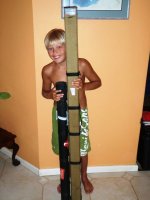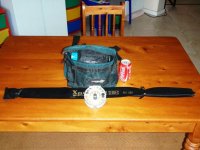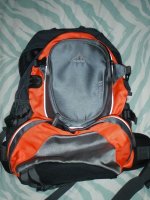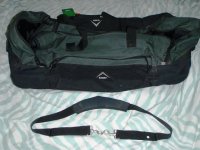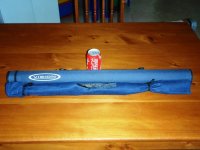Having seen many posts regarding the travelling angler, I thought I would try and shed some light on what works for me with regards to travel and tackle. Please note that I am by no means an expert but I do travel at least every alternate week and always have some kit with me. Also, whilst I have not been everywhere, I see Europe 3 times a year, USA and Aspac yearly and MEA every week.
I generally fly with our national airline and they have one of the best baggage policies around. Have a look at http://www.flysaa.com/za/en/flyingSAA/baggage/sportingEquipment.html
And you will see:
Special Baggage Charges - (for International and Domestic Journeys valid to both the Weight and Piece Concept)
Special Baggage Regulations are applicable on SA operating flights only. (SA 1000; 7000; 8000 series excluded)
The following Sport equipment mentioned below will allow an additional 20kg free of charge per passenger - this is valid to both the Weight and Piece Concept. Please note that this is not applicable to special events such as the Argus.
• Angling
This means that you are allowed an extra 20kgs of fishing tackle when on SAA flights – free. As long as it complies with the overall dimension and weight policy, and is not mixed with other luggage, then you can take it.
It is always worthwhile to investigate the luggage policy of the airline you are travelling on, and take a printout with you if necessary to combat the overzealous check in person.
Hand luggage (the stuff you carry on board) is generally limited to one piece, 8kgs, total dimensions of 115cm (L + W + D). On board staff are normally quite strict on this so be aware that anything extra may get put into the hold.
I guess there are 2 sorts of trips – the dedicated fishing trip and the trip where fishing is an add on.
The Dedicated Trip.
I am not going to go into species specific destinations as obviously a jigging trip to Latham will have very different gear to an Alaskan salmon trip. However, there are a few things to consider.
How to pack rods.
Basically there are three choices. The least expensive and DIY method involves PVC drain pipe cut to size. I use 4 inch diameter and buy 2 end caps. One is permanently sealed in place as the base; the other is the removable top which is taped into place when travelling. To avoid losing it when the tube is unpacked, I normally secure it with a cable tie. I have riveted a hasp onto the tube and use a combination lock to secure it. Stay away from keys as they are easily lost – my entire travel luggage has combination locks with the same combo, it is much easier to remember!
The second method is to use individual rod tubes that are often sold with the rod. These are great in that they are the correct size, quite strong and can be bundled together to make a substantial package. When it comes to securing them to each other, stay away from packaging tape – rather use a fabric tape combined with cable ties.
I generally fly with our national airline and they have one of the best baggage policies around. Have a look at http://www.flysaa.com/za/en/flyingSAA/baggage/sportingEquipment.html
And you will see:
Special Baggage Charges - (for International and Domestic Journeys valid to both the Weight and Piece Concept)
Special Baggage Regulations are applicable on SA operating flights only. (SA 1000; 7000; 8000 series excluded)
The following Sport equipment mentioned below will allow an additional 20kg free of charge per passenger - this is valid to both the Weight and Piece Concept. Please note that this is not applicable to special events such as the Argus.
• Angling
This means that you are allowed an extra 20kgs of fishing tackle when on SAA flights – free. As long as it complies with the overall dimension and weight policy, and is not mixed with other luggage, then you can take it.
It is always worthwhile to investigate the luggage policy of the airline you are travelling on, and take a printout with you if necessary to combat the overzealous check in person.
Hand luggage (the stuff you carry on board) is generally limited to one piece, 8kgs, total dimensions of 115cm (L + W + D). On board staff are normally quite strict on this so be aware that anything extra may get put into the hold.
I guess there are 2 sorts of trips – the dedicated fishing trip and the trip where fishing is an add on.
The Dedicated Trip.
I am not going to go into species specific destinations as obviously a jigging trip to Latham will have very different gear to an Alaskan salmon trip. However, there are a few things to consider.
How to pack rods.
Basically there are three choices. The least expensive and DIY method involves PVC drain pipe cut to size. I use 4 inch diameter and buy 2 end caps. One is permanently sealed in place as the base; the other is the removable top which is taped into place when travelling. To avoid losing it when the tube is unpacked, I normally secure it with a cable tie. I have riveted a hasp onto the tube and use a combination lock to secure it. Stay away from keys as they are easily lost – my entire travel luggage has combination locks with the same combo, it is much easier to remember!
The second method is to use individual rod tubes that are often sold with the rod. These are great in that they are the correct size, quite strong and can be bundled together to make a substantial package. When it comes to securing them to each other, stay away from packaging tape – rather use a fabric tape combined with cable ties.

